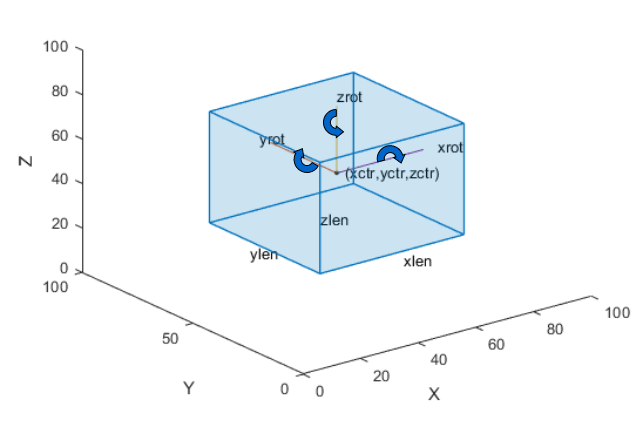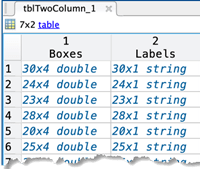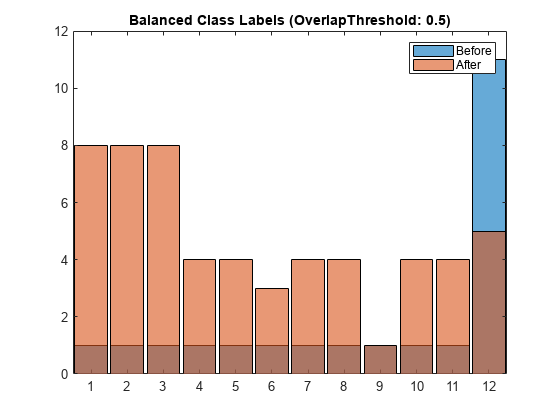boxLabelDatastore
Datastore for bounding box label data
Description
The boxLabelDatastore object creates a datastore for
bounding box label data. Use this object to read labeled bounding box data for object
detection.
To read bounding box label data from a boxLabelDatastore object,
use the read
function. This object function returns a cell array with either two or three columns.
You can create a datastore that combines the boxLabelDatastore object
with an ImageDatastore object using the combine
object function. Use the combined datastore to train object detectors using the training
functions such as trainYOLOv4ObjectDetector and trainSSDObjectDetector. To modify the ReadSize
property, you can use dot notation.
Creation
Description
blds = boxLabelDatastore(tbl1,...,tbln)boxLabelDatastore object from one or more tables
containing labeled bounding box data.
Input Arguments
Properties
Object Functions
combine | Combine data from multiple datastores |
countEachLabel | Count occurrence of pixel or box labels |
hasdata | Determine if data is available to read from label datastore |
numpartitions | Number of partitions for label datastore |
partition | Partition label datastore |
preview | Read first row of data in datastore |
progress | Percentage of data read from a datastore |
read | Read data from label datastore |
readall | Read all data in label datastore |
reset | Reset label datastore to initial state |
shuffle | Return shuffled version of label datastore |
subset | Create subset of datastore or FileSet |
transform | Transform datastore |
isPartitionable | Determine whether datastore is partitionable |
isShuffleable | Determine whether datastore is shuffleable |
Examples
Version History
Introduced in R2019bSee Also
Apps
Functions
balanceBoxLabels|blockLocationsWithROI|analyzeNetwork(Deep Learning Toolbox) |estimateAnchorBoxes
Objects
Topics
- Datastores for Deep Learning (Deep Learning Toolbox)
- Deep Learning in MATLAB (Deep Learning Toolbox)
- Training Data for Object Detection and Semantic Segmentation






